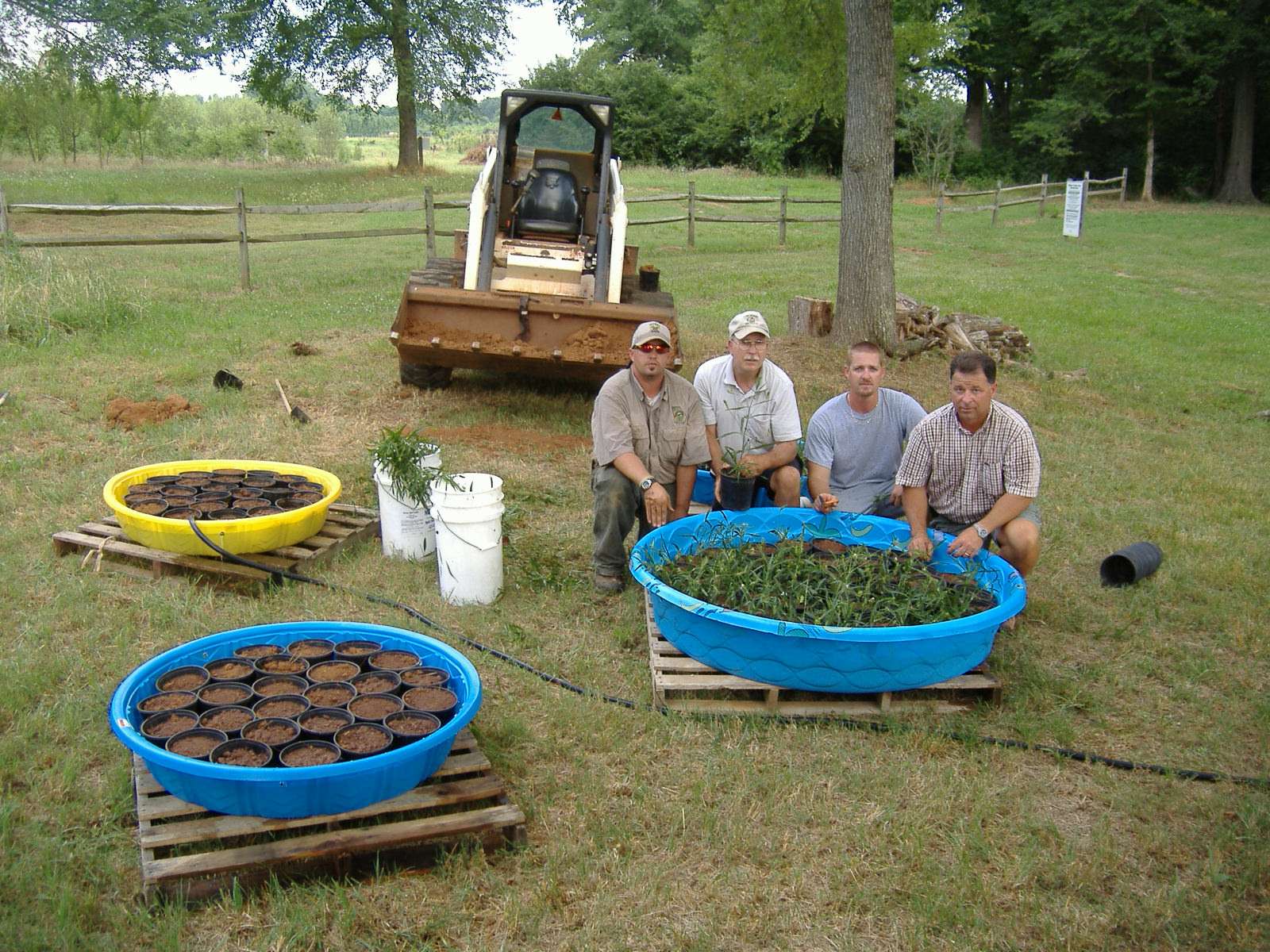
BIRMINGHAM, Ala. — Gerald Adrian knows all about hydrilla, an invasive non-native aquatic plant that bass anglers often target as cover for fish. He can also explain why over-proliferation of hydrilla and other invasive aquatic species can spell doom for a top bass fishery.
Adrian, a representative for the Aquatic Ecosystem Restoration Foundation (AERF) and Aquatic Plant Management Society (APMS), aims to educate the public about the impacts of invasive plants. He believes the best way to do so is to expand contacts through the grass-roots of the bass angling world.
When Adrian approached B.A.S.S. Conservation Director Noreen Clough with his idea, that goal was the impetus for the new AERF-APMS/B.A.S.S. Conservation Aquatic Vegetation Management Award. The award, worth $2,000, will be presented annually to the B.A.S.S. Nation club that conducts the most outstanding project that addresses control of invasive aquatic plants while promoting the conservation or propagation of native vegetation, or both.
“I am very pleased that the Aquatic Ecosystem Restoration Foundation and Aquatic Plant Management Society recognize the good work that B.A.S.S. Nation conservation volunteers are doing in restoring native aquatic vegetation and combating invasive plants in our public waters,” Clough said. “Whether it is putting in native water willows or pulling out noxious weeds, building floating islands or participating in aquatic vegetation management meetings, our B.A.S.S. Nation conservation directors and their volunteers are committed to keeping our waterways healthy. That the foundation recognizes this through a generous awards program makes B.A.S.S. very proud that our efforts are rewarded. It’s a great partnership.”
AERF will fund the award, while APMS will provide a travel stipend for the winning club’s conservation director, or president, to travel to the APMS annual national meeting to give a presentation on the project. The 2014 National APMS meeting — the first at which the winning club will report — will be held in Savannah, Ga.
“This is a long-term commitment for us,” Adrian said. “It’s important for everyone to be aware of the benefits of controlling invasive plants. This gives us a grass-roots connection with the anglers that are concerned about these plants and lets us provide an avenue of education for B.A.S.S. members. A lot of anglers think they should let hydrilla grow because it’s good for fishing.”
Adrian explains the negative impacts of hydrilla, which began its U.S. invasion in Florida in the 1960s. It displaces native plants, and it can create an unhealthy aquatic ecosystem.
“Hydrilla can occupy an entire lake,” Adrian said. “It can take a lake over and spread completely across a lake if it’s shallow. A canopy like that reduces oxygen in the water and makes it difficult to forage. Once it gets to a certain point, it impacts a fishery. Large fish can’t move around and get to their prey. What you end up with is a whole bunch of small bass in a lake.”
With a bigger picture of the effects of hydrilla and other non-native plants, Adrian says those critical grass-roots anglers and weekend fishermen will understand “why we do what we do” in battling non-native plants throughout the country.
The projects, which will be judged by Clough, along with Dr. Mike Netherland of the U.S. Army Engineer Research and Development Center and a representative from AERF-APMS, must be submitted to B.A.S.S. conservation by Oct. 31 of a given year, beginning in October 2013, to be eligible for the award, which will be presented during the following year’s Bassmaster Classic.
Criteria for the award include:
Although the award will be given annually, the project must be a multi-year project with clearly defined and demonstrated short-term goals and long-term objectives.
The project must include a monitoring plan to determine long-term success.
The B.A.S.S. Nation club must demonstrate that members have worked cooperatively with the state fisheries and/or wildlife resource agency, the municipality and the project administrator (e.g., Corps of Engineers, Bureau of Reclamation, etc.).
Adding a youth component to a project will be a competitive enhancement.
The project submission must include before and after photographs.
The project must take place on waters with public access.
About AERF and APMS
For more information about the Aquatic Ecosystem Research Foundation and the Aquatic Plant Management Society visit their respective websites at: www.aquatics.org and apms.org.
